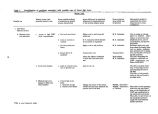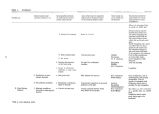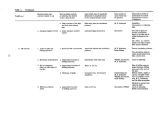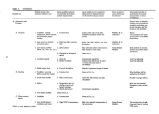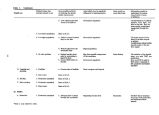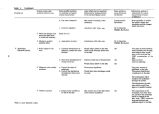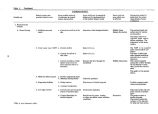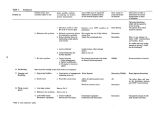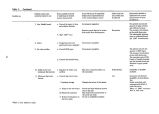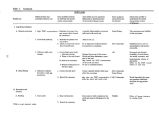| OCR Text |
Show on groundwater conditions in the Great Salt Lake Desert to estimate the average annual groundwater inflow to the lake from this area. During 1970- 1972, the U. S. Geological Survey in cooperation with the Utah Geological and Mineral Survey carried out an investigation to establish ( 1) the net movements of dissolved solids load through the railroad causeway for the 1971 and 1972 water years, ( 2) salt load movement through the causeway for simulated rising and falling lake stages, and ( 3) the effects on salt movement patterns of enlarging the present culverts through the causeway. The project included field measurements of flow through the causeway. Flow through the causeway was found to occur through the semi- permeable fill and through two 15 foot wide concrete culverts in the causeway. A flow northward was observed in the upper portion of the culverts and fill. Beneath this flow was a southward flow in both the fill and culverts. The fill flow accounted for approximately 80 percent of the total flow. The results of the USGS study are reported by Waddell and Bolke ( 1973). A major contribution of this study was the development of a procedure for predicting the flow through the culverts and fill for various head and density differences across the causeway. The equations were developed mainly from regression analyses based on fill and culvert flow data gathered for the study. Two additional models of flow through the causeway have been developed. Lin and Lee ( 1972) developed a Hele- Shaw model of seepage flow through the causeway and suggest that the model study, when coupled with field investigations, should provide all the information needed to assess the impacts of the causeway. Cheng and Hu have submitted a report for publication in the Journal of the Hydraulics Division of the American Society of Civil Engineers in which they present a mathematical model of a two- fluid flow system through a homogeneous porous media. Results of the numerical solution are correlated with that of a Hele- Shaw experiment. The future elevation trends of the lake are not yet well established. Knowledge of the elevation fluctuation is important in planning the uses of the lake, especially for uses such as recreation which must cope with the continually changing location of the shore line. Thus, there is a need to establish a reliable lake elevation probability curve for present lake conditions. The Utah Division of Water Resources ( 1974) produced such a curve based on the 1901 to 1973 period. The main concern expressed during meetings with experts on uses of the lake was that this base period was not a true representation of historic lake levels. The continued rise of the lake since 1963 has produced lake elevations which have damaged recreational, wildlife, and mineral extraction users of the lake. If the lake continues to rise it will cause extensive damage to these and other users. For this reason, finding the short and long- term means of alleviating high water damage is presently the top priority research need. Consultants hired by the Great Salt Lake Division ( Austin, 1976) indicated there is a good probability the lake elevation will rise above the present level in the near future. The work by these consultants was viewed as preliminary and an in depth state of the art investigation of future trends of lake elevation was identified as a need. The Great Salt Lake Division is presently looking for possible solutions of the flooding problem including: 1. Pumping brine to the west desert to increase evaporation. 2. Pumping brine into the north arm to decrease the south arm elevation. 3. Breaching the railroad causeway to decrease the south arm elevation. 4. Storage and use of water upstream to decrease inflow. 5. Export of water from the basin to decrease inflow. The ultimate solution to both the short and long- term flooding problem may be a combination of several of the above measures. The effectiveness of these measures in controlling the lake elevation can be evaluated through an understanding of the water balance. Proper management of the lake requires that the impact on social uses caused by implementing these solutions be understood so that the benefits of flood relief can be weighed against any adverse effects to users of the lake. The main impact would come possibly from changing the salinity characteristics of the lake. The Corps of Engineers is presently studying flood damage as a function of lake elevation. Equally as important as extremely high water levels are extremely low levels. In 1963 the concern was that the lake would completely disappear. At the low level experienced in 1963 uses of the lake were affected due to the shore line receding from |


















